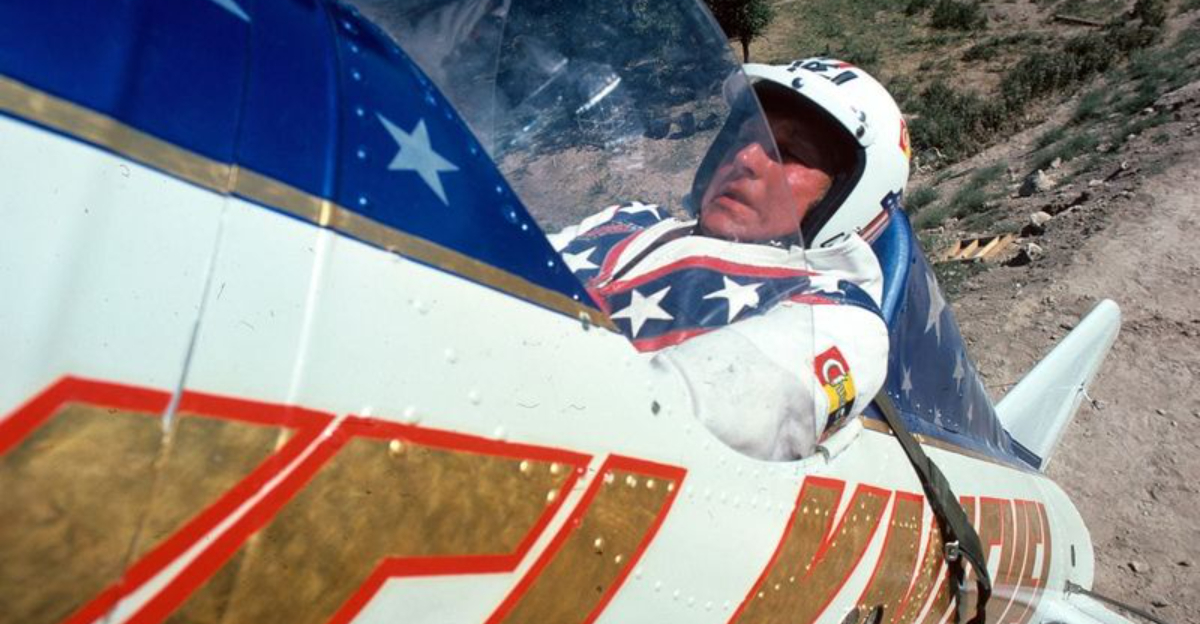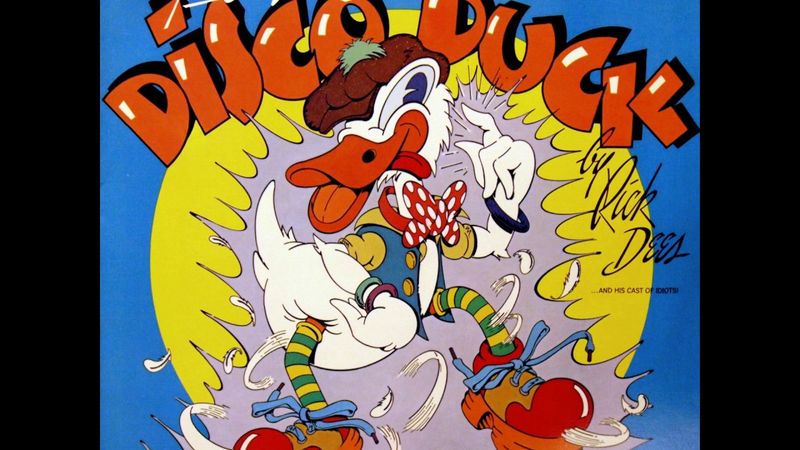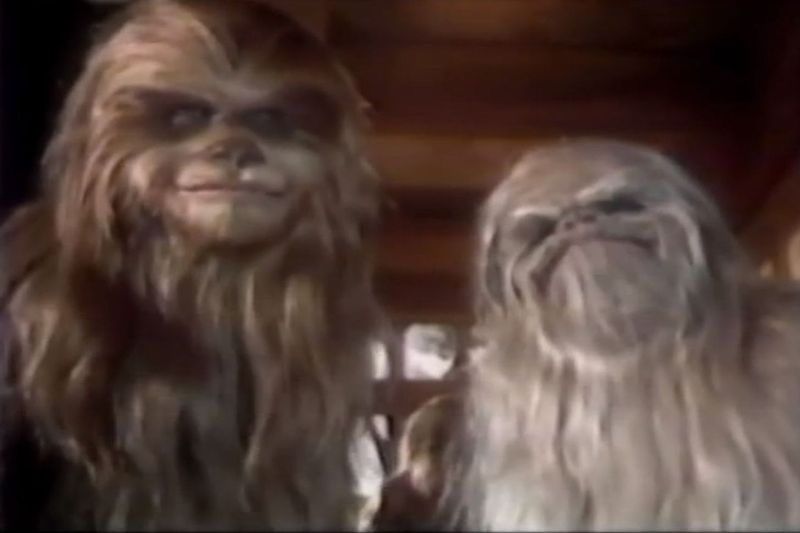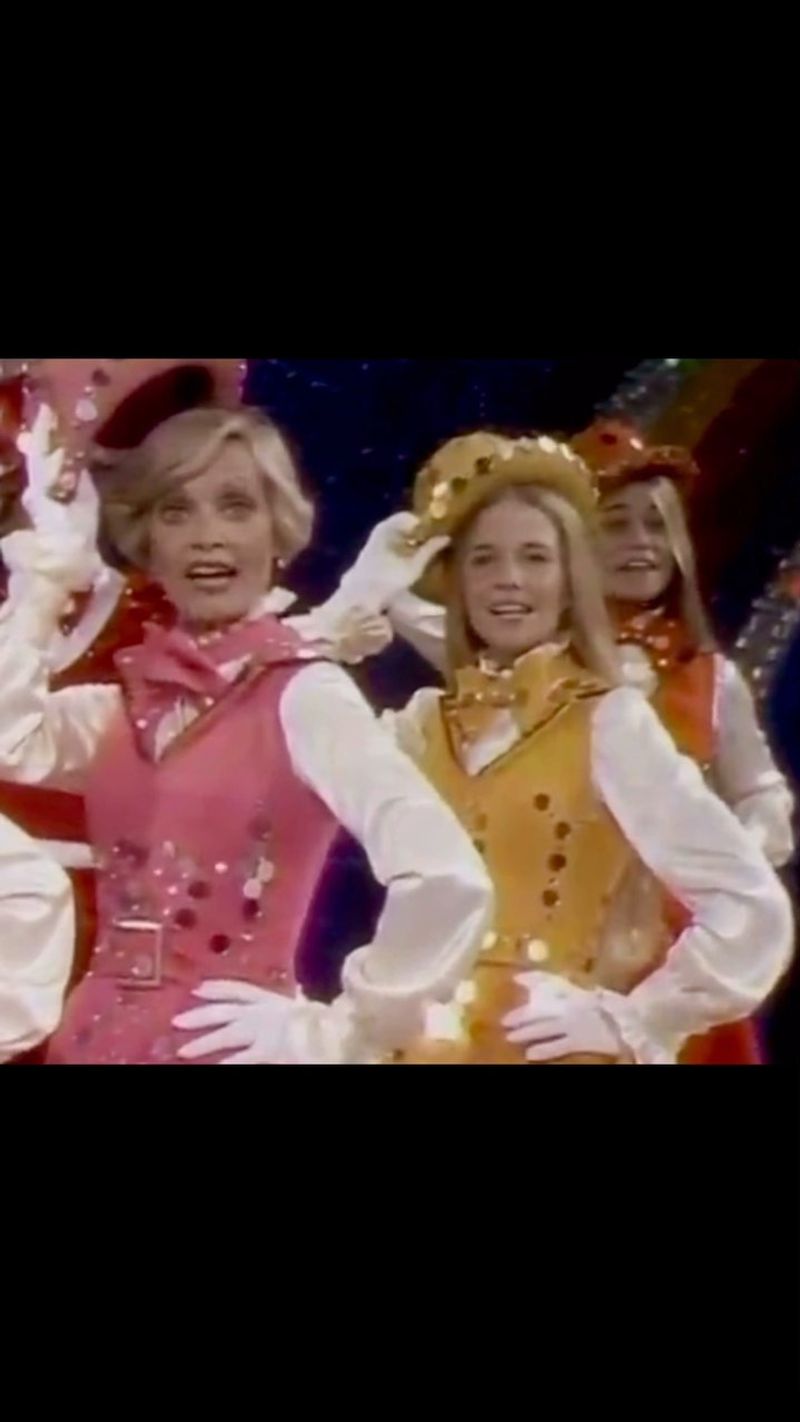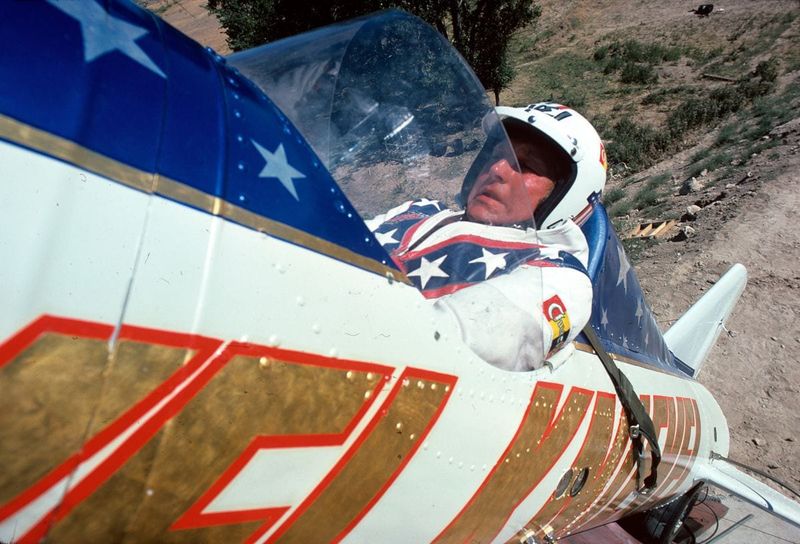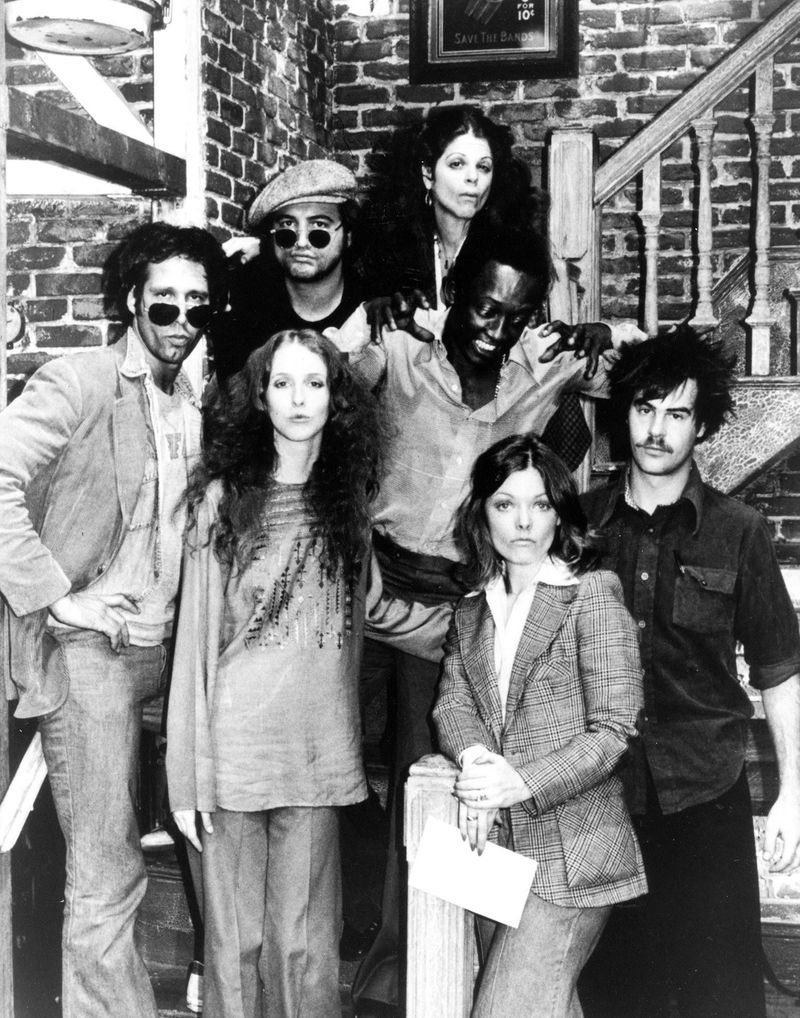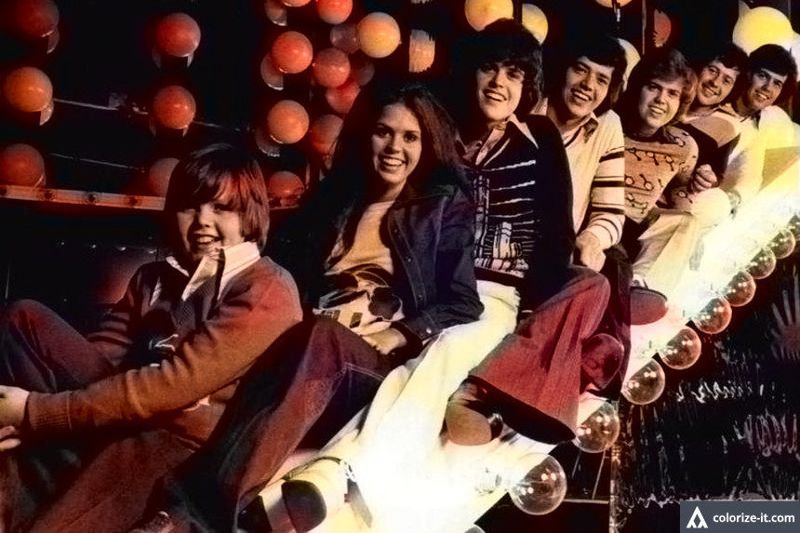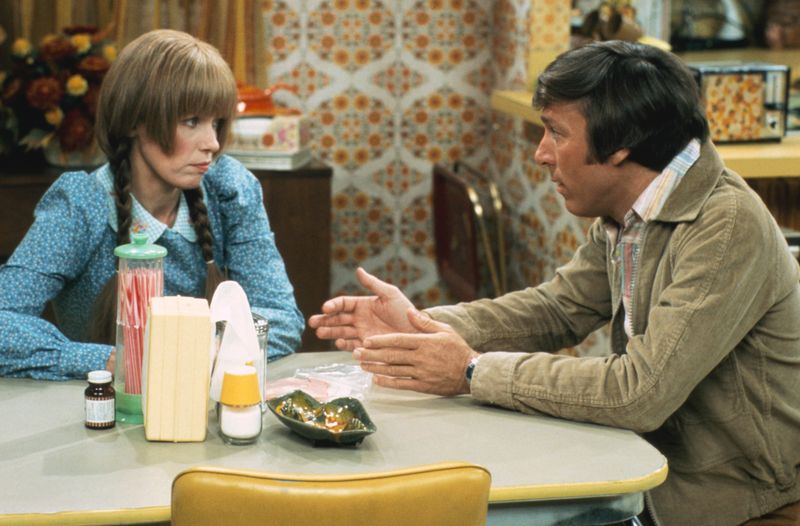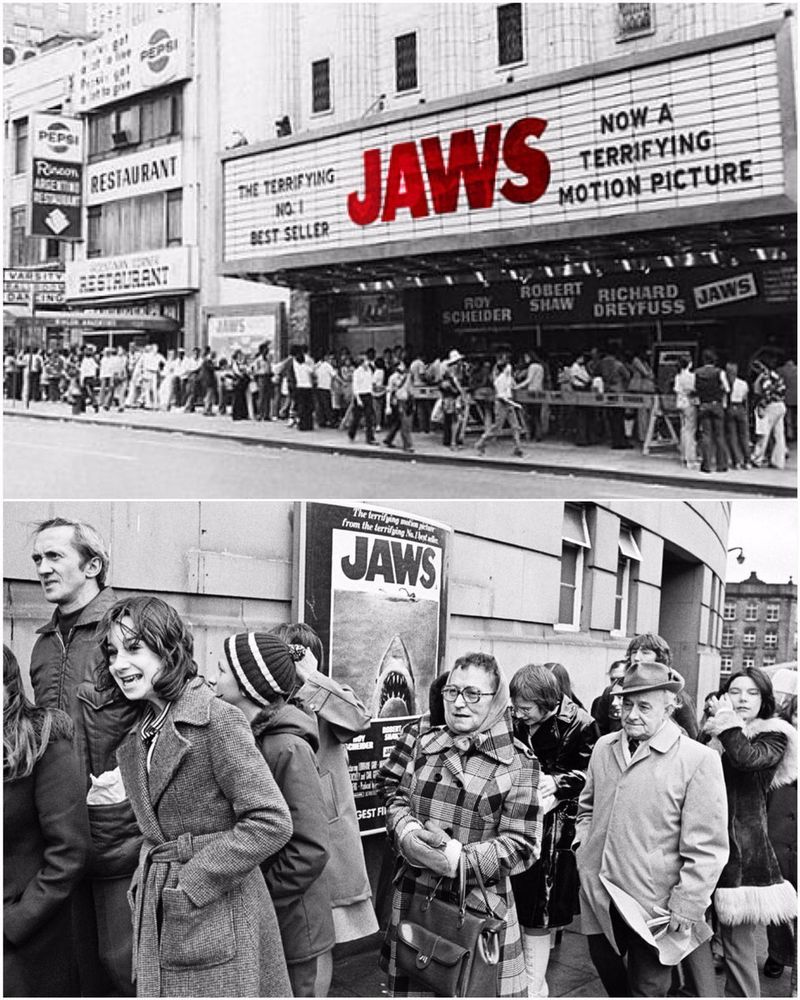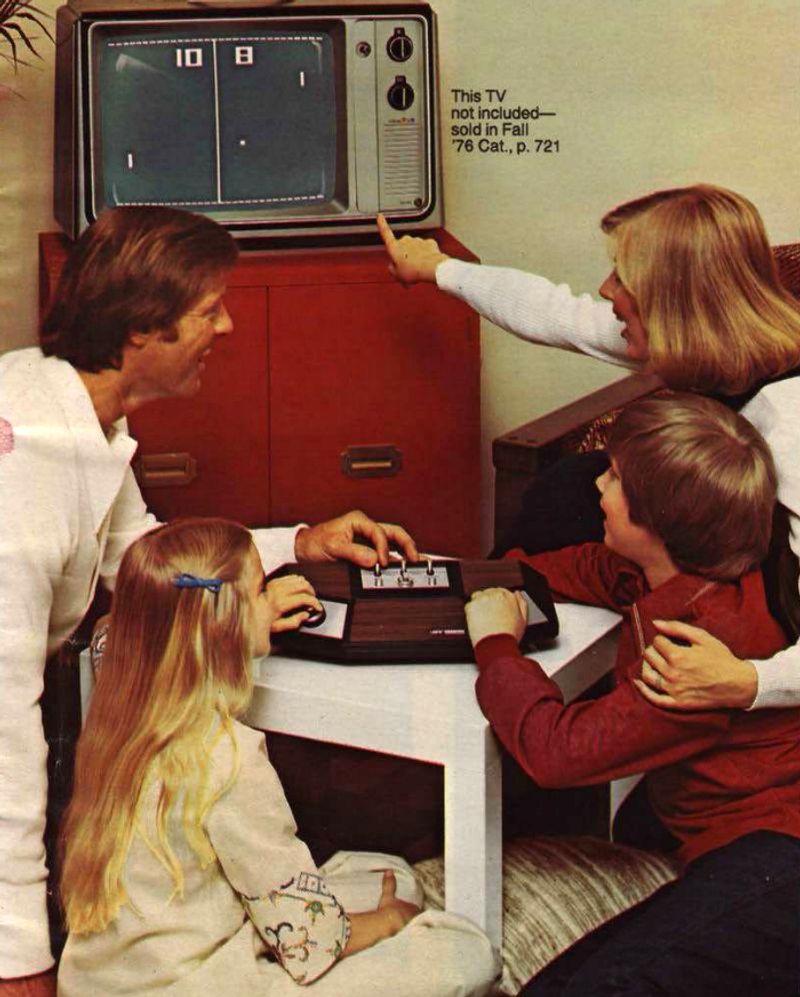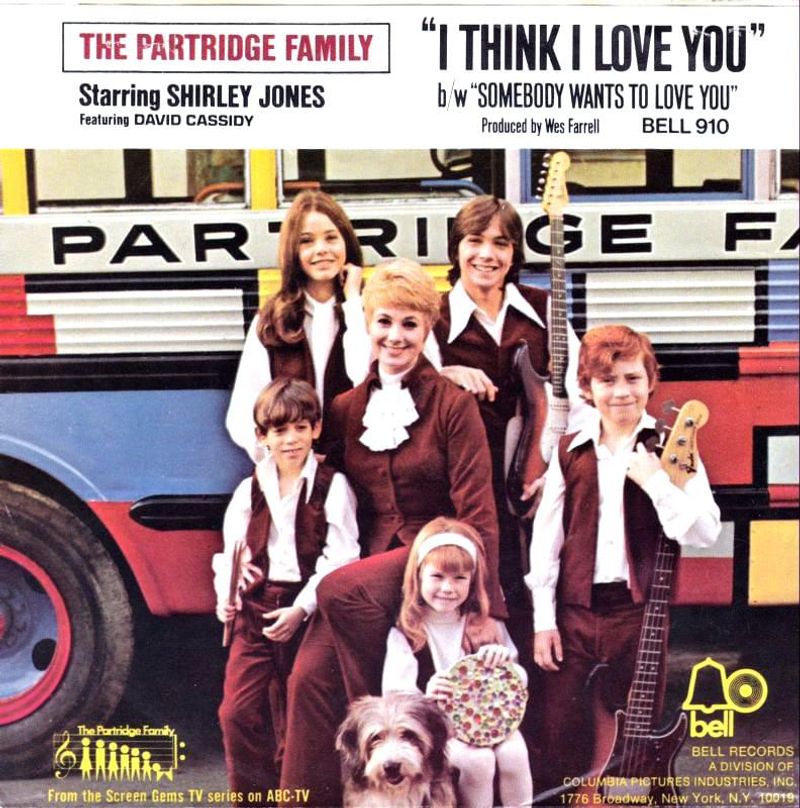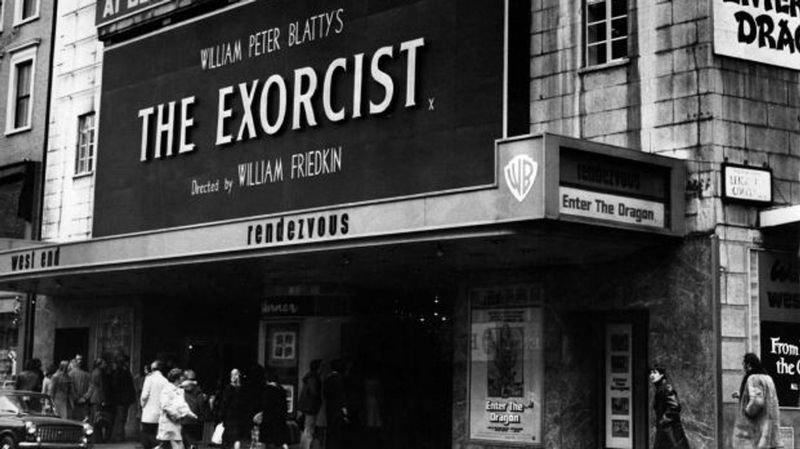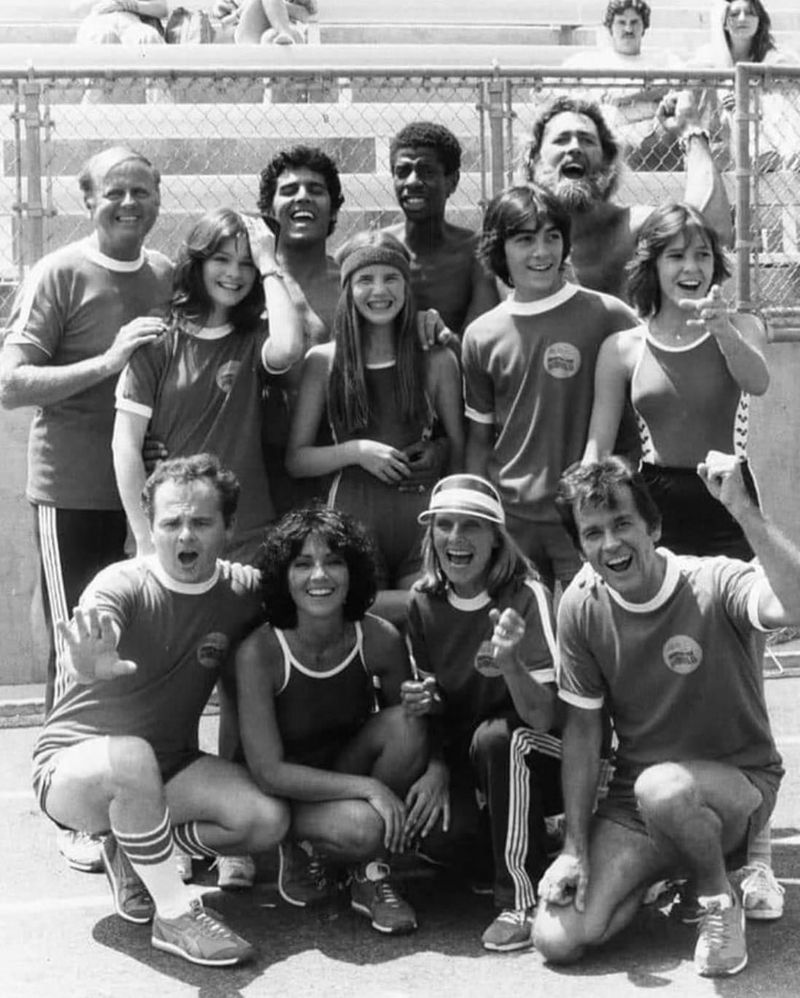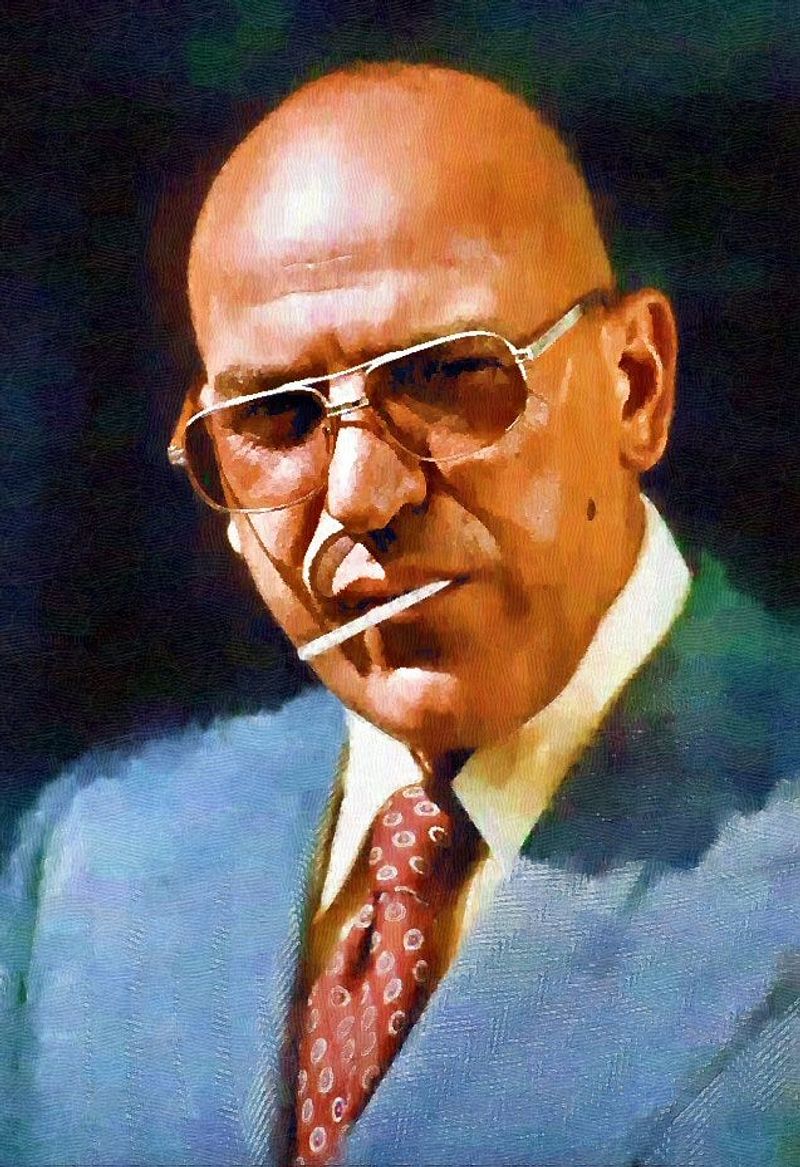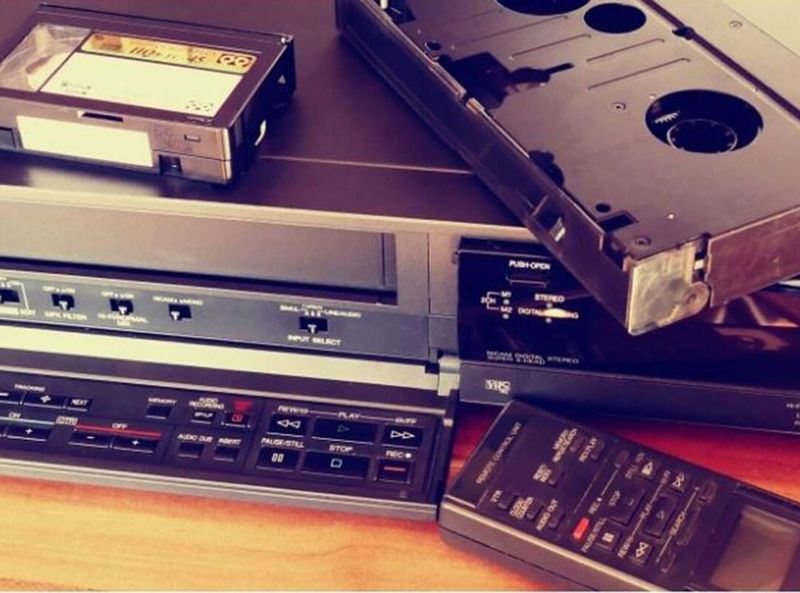The 1970s was more than just bell-bottoms and disco balls. This decade brought us groundbreaking entertainment, bizarre pop culture moments, and technological innovations that shaped our world today. From forgotten TV specials to one-hit wonders, the ’70s were packed with cultural milestones that have somehow slipped through the cracks of our collective memory. Get ready for a groovy trip down memory lane as we uncover some truly unforgettable (yet somehow forgotten) gems from this wild decade.
1. Disco Duck’s Chart-Topping Madness
Radio DJ Rick Dees unleashed this novelty song in 1976, featuring duck noises set to a disco beat. Nobody expected this feathered phenomenon to waddle its way to #1 on the Billboard charts.
The song’s success perfectly captured the anything-goes spirit of the disco era. Dees performed in duck costumes on TV shows, and the track sold over four million copies worldwide.
Disco Duck remains one of those bizarre cultural moments that could only happen in the ’70s – proof that sometimes the silliest ideas become the biggest hits.
2. The Infamous Star Wars Holiday Special
George Lucas probably wishes he could use the Force to erase this TV disaster from history. Aired just once in 1978, this bizarre special featured Chewbacca’s Wookiee family celebrating “Life Day” while Han and Luke made awkward cameos.
Musical numbers by Jefferson Starship and Bea Arthur singing in the Mos Eisley Cantina added to the surreal experience. The special was so universally panned that it never received an official release.
Despite Lucas’s attempts to bury it, bootleg copies have circulated for decades, becoming a treasured piece of Star Wars infamy among dedicated fans.
3. The Brady Bunch Variety Hour’s Sequined Disaster
America’s favorite blended family took a bizarre detour in 1976 when they traded sitcom scenarios for song-and-dance routines in this short-lived variety show. Almost the entire original cast (minus Eve Plumb as Jan) donned sequined outfits and performed cheesy musical numbers around a water fountain.
The Brady kids suddenly had professional-level singing and dancing abilities that never existed in their original show. Water ballet segments became a strange recurring feature.
This glittery trainwreck lasted only nine episodes but remains a fascinating example of ’70s networks desperately trying to capitalize on fading sitcom popularity.
4. Evel Knievel’s Snake River Canyon Spectacular Failure
September 8, 1974 marked daredevil Evel Knievel’s most ambitious stunt yet. Dressed in his star-spangled jumpsuit, he attempted to launch himself across Idaho’s Snake River Canyon in a steam-powered rocket called the Skycycle X-2.
The event was hyped with massive publicity and closed-circuit television broadcasts to theaters nationwide. Millions watched as the parachute deployed prematurely, causing Knievel to float harmlessly down into the canyon rather than soaring across it.
Though technically a failure, the stunt cemented Knievel’s legacy as America’s most fearless showman and became an iconic piece of ’70s spectacle.
5. Saturday Night Live’s Raw Beginnings
When SNL premiered in October 1975, it wasn’t the polished institution we know today. The original “Not Ready for Prime Time Players” – including John Belushi, Gilda Radner, and Chevy Chase – brought a dangerous, countercultural edge that shocked viewers accustomed to sanitized TV comedy.
Creator Lorne Michaels fought constant battles with network censors. Early episodes featured edgier content, including drug references, political satire, and experimental comedy that would never make it to air today.
The show’s gritty, sometimes uneven performances gave it an authenticity missing from modern iterations – performers occasionally broke character, flubbed lines, or struggled through technical difficulties.
6. The “Paul is Dead” Conspiracy Frenzy
Whispers that Paul McCartney had died in a 1966 car crash and been replaced by a lookalike reached fever pitch in the early ’70s. Magazine articles analyzed Beatles album covers for “clues” – like Paul being barefoot on the Abbey Road cover (supposedly symbolizing a corpse).
Radio stations hosted specials where callers shared their theories about backward messages in songs. The phrase “turn me on, dead man” supposedly appeared when playing “Revolution 9” in reverse.
McCartney finally addressed the rumors in a 1974 Rolling Stone interview, joking: “If I were dead, I’d be the last to know.” The conspiracy remains one of music’s most enduring urban legends.
7. The Osmonds vs. The Jacksons Pop Rivalry
Long before boy band wars like NSYNC vs. Backstreet Boys, the ’70s had its own family band rivalry. The clean-cut Osmonds (led by heartthrob Donny) and the dynamic Jacksons (featuring young Michael) battled for teen magazine covers and chart positions throughout the decade.
Both groups had their own Saturday morning cartoons and merchandise empires. The Osmonds represented wholesome Mormon values while The Jackson 5 brought Motown soul and electric performances.
Teen girls typically pledged allegiance to one group or the other. This rivalry pushed both groups to greater heights, with each trying to outperform the other on television specials and with increasingly elaborate stage shows.
8. Mary Hartman’s Twisted Take on Soap Operas
“Mary Hartman, Mary Hartman” wasn’t your grandmother’s soap opera. This 1976 parody series starred Louise Lasser as a housewife obsessed with waxy yellow buildup on her kitchen floor while surrounded by absurd tragedies – including a neighbor family being impaled by a falling TV antenna.
Creator Norman Lear (of “All in the Family” fame) crafted this bizarre satire after networks rejected it for being too controversial. The show aired five nights a week in late-night syndication, developing a cult following.
Its surreal plotlines included mass murders, impotence, exhibitionism, and religious cults – all delivered with deadpan seriousness that made it both hilarious and deeply unsettling.
9. Jaws: The First True Summer Blockbuster
Before 1975, Hollywood didn’t specifically target summer for major releases. Then came a mechanical shark named Bruce and a young director named Steven Spielberg who changed everything.
“Jaws” pioneered modern marketing techniques with a nationwide release backed by heavy TV advertising. Lines wrapped around blocks as theaters sold out show after show, ultimately earning $470 million worldwide ($2.5 billion in today’s dollars).
The film’s success created the template for summer movie season that still exists today. Ironically, the production was plagued with problems – the mechanical shark rarely worked properly, forcing Spielberg to imply the shark’s presence rather than show it directly.
10. Pong’s Revolution of Home Entertainment
Before PlayStations and Xboxes, there was a simple game of digital table tennis that changed entertainment forever. Atari’s Pong, released in 1972, featured two white rectangles batting a square “ball” back and forth on a black background.
When Sears released the home version for Christmas 1975, it sparked a national frenzy. Parents waited in enormous lines to purchase the $100 console ($500 in today’s money).
Despite its primitive graphics, families gathered around televisions for hours competing for high scores. This humble game launched the video game industry that would eventually outgrow Hollywood in revenue and cultural impact.
11. The Partridge Family’s Actual Chart Success
Few remember that this fictional TV family band actually dominated real-world music charts. Their debut single “I Think I Love You” outsold The Beatles’ “Let It Be” in 1970, selling over 5 million copies and hitting #1 on Billboard.
While David Cassidy and Shirley Jones were the only cast members who actually sang on the records, the group released eight albums between 1970-1974. Session musicians from the legendary Wrecking Crew provided the instrumental backing.
The Partridge Family toured as a real band (with Cassidy as the only TV cast member) and even performed at White House events. Their merchandise empire included everything from lunch boxes to breakfast cereal.
12. The Post-Bruce Lee Kung Fu Explosion
After Bruce Lee’s tragic death in 1973, martial arts cinema didn’t fade away – it exploded. Theaters across America suddenly featured wall-to-wall kung fu films, most produced in Hong Kong with dubbing that rarely matched the actors’ mouth movements.
Studios rushed out dozens of imitators with similar-sounding names: Bruce Li, Bruce Le, and Dragon Lee all attempted to fill the void. Television stations created “Kung Fu Theater” programming blocks that aired these films on weekend afternoons.
This craze influenced everything from fashion to music. The martial arts boom eventually led to American productions like “Enter the Dragon” and the TV series “Kung Fu” starring David Carradine.
13. The First Star Trek Convention’s Unexpected Turnout
January 1972 marked a pivotal moment for fandom culture when the first Star Trek convention was held in New York City. Organizers expected around 500 attendees – instead, over 3,000 passionate fans showed up, completely overwhelming the venue.
Trekkies arrived in homemade uniforms, sporting Spock ears and carrying hand-built props. The convention featured screenings of rare blooper reels and appearances by creator Gene Roddenberry and several cast members.
This gathering established the template for modern fan conventions and demonstrated the purchasing power of dedicated fan communities. Network executives, who had canceled the show just three years earlier, suddenly realized they had prematurely axed a potential goldmine.
14. The Exorcist’s Theater Hysteria
When “The Exorcist” opened in December 1973, it triggered unprecedented audience reactions. Theaters reported viewers fainting, vomiting, and fleeing in terror during screenings. Paramedics were regularly stationed outside major theaters.
Religious groups picketed theaters while some audience members experienced what they believed were demonic attacks after viewing. The film’s realistic special effects and taboo religious themes created a perfect storm of controversy.
Several cities attempted to ban the film entirely. Despite (or because of) the controversy, it became the highest-grossing R-rated horror film of all time when adjusted for inflation and fundamentally changed how horror movies were marketed and perceived by mainstream audiences.
15. Happy Days’ Shark-Jumping Moment
Before it became a phrase meaning “the moment a show begins its decline,” jumping the shark was actually a real television event. In a 1977 Happy Days episode, Fonzie (wearing swim trunks but still sporting his trademark leather jacket) water-skied over a confined shark to prove his courage.
The absurd scene marked the show’s transition from grounded comedy to increasingly gimmicky storylines. Writer Jon Hein later coined the phrase “jumping the shark” in 1985 when discussing the moment TV shows lose their way.
Ironically, Happy Days continued for six more successful seasons after this infamous moment, though most fans agree the show’s best episodes came before Fonzie’s aquatic stunt.
16. Battle of the Network Stars’ Celebrity Olympics
Long before Dancing with the Stars, celebrities competed for athletic glory in this bizarre sports competition. ABC, NBC, and CBS stars faced off in events like tug-of-war, obstacle courses, and swimming relays while wearing extremely tight, network-branded t-shirts.
Howard Cosell provided serious sports commentary for events featuring sitcom actors huffing through three-legged races. Viewers were treated to the sight of TV’s biggest stars sweating, falling, and occasionally injuring themselves for network pride.
The specials became rating goldmines, airing twice yearly from 1976-1988. Farrah Fawcett’s impressive showing in the 1976 running events became legendary after she outperformed most of her male competitors.
17. Kojak’s Lollipop-Sucking Detective Revolution
Telly Savalas transformed the tough-guy detective image when his character Theo Kojak began sucking lollipops in this gritty police drama. The quirky habit started when Savalas quit smoking and needed something to do with his mouth during scenes.
His catchphrase “Who loves ya, baby?” became part of the national lexicon. Kojak’s bald head was revolutionary in an era when leading men typically had full heads of hair, making Savalas an unlikely sex symbol.
The show tackled serious issues like police corruption and racial tensions that were uncommon in 1970s television. Kojak’s lollipop habit inspired a generation of children to imitate him while playing cops and robbers.
18. The Epic Betamax vs. VHS Format War
In 1975, Sony launched Betamax, the first successful home video format. Just one year later, JVC countered with VHS, sparking the first major format war of the consumer electronics era.
Beta offered superior picture quality but shorter recording times. VHS sacrificed some quality but allowed for longer recordings – up to 6 hours compared to Beta’s initial 1-hour limit.
The deciding factor? The adult film industry chose VHS, and pornography drove early adoption of home video technology. By 1980, VHS controlled 70% of the market despite Beta’s technical advantages – teaching tech companies a lasting lesson about the importance of accessibility over quality.
